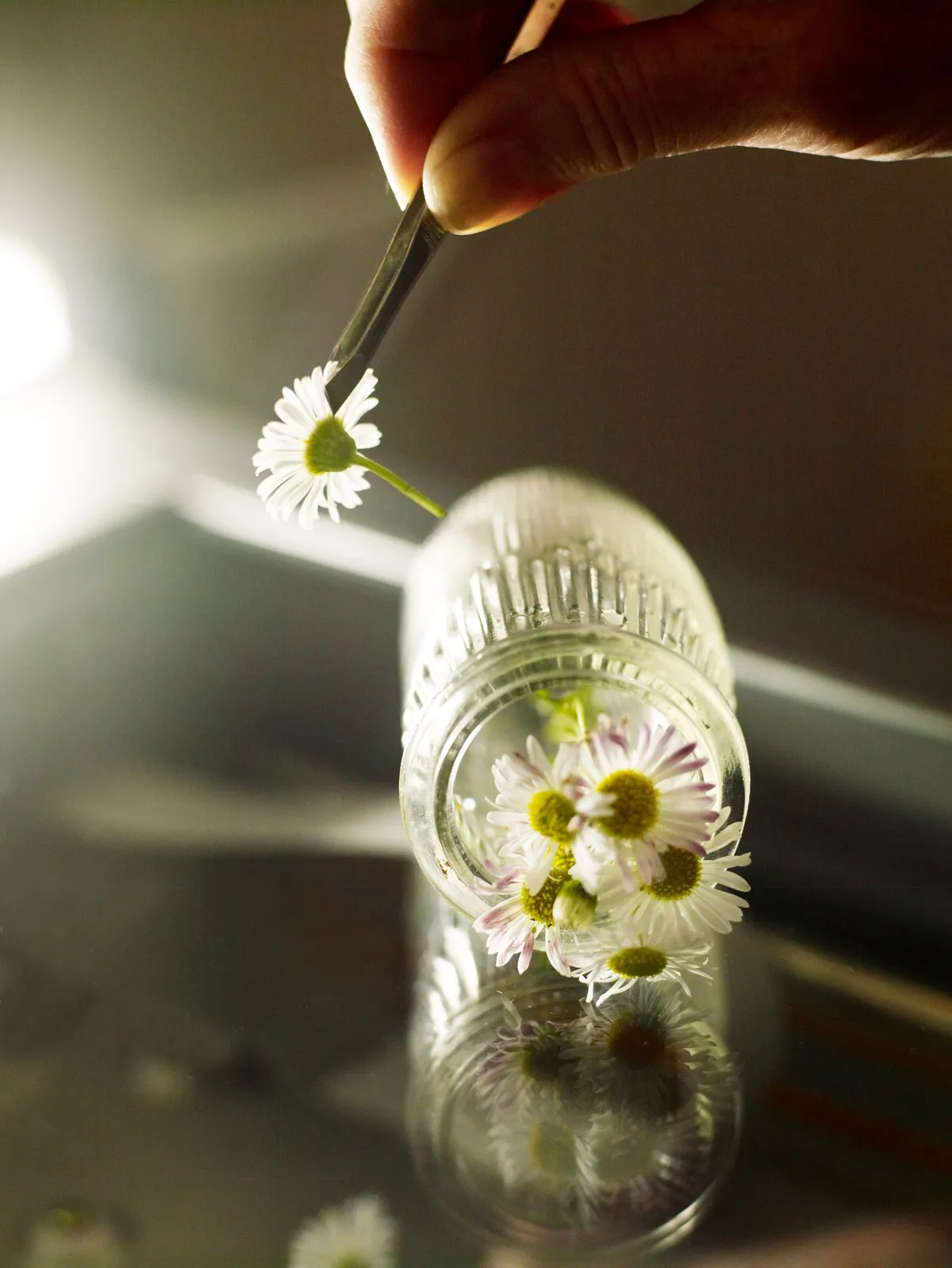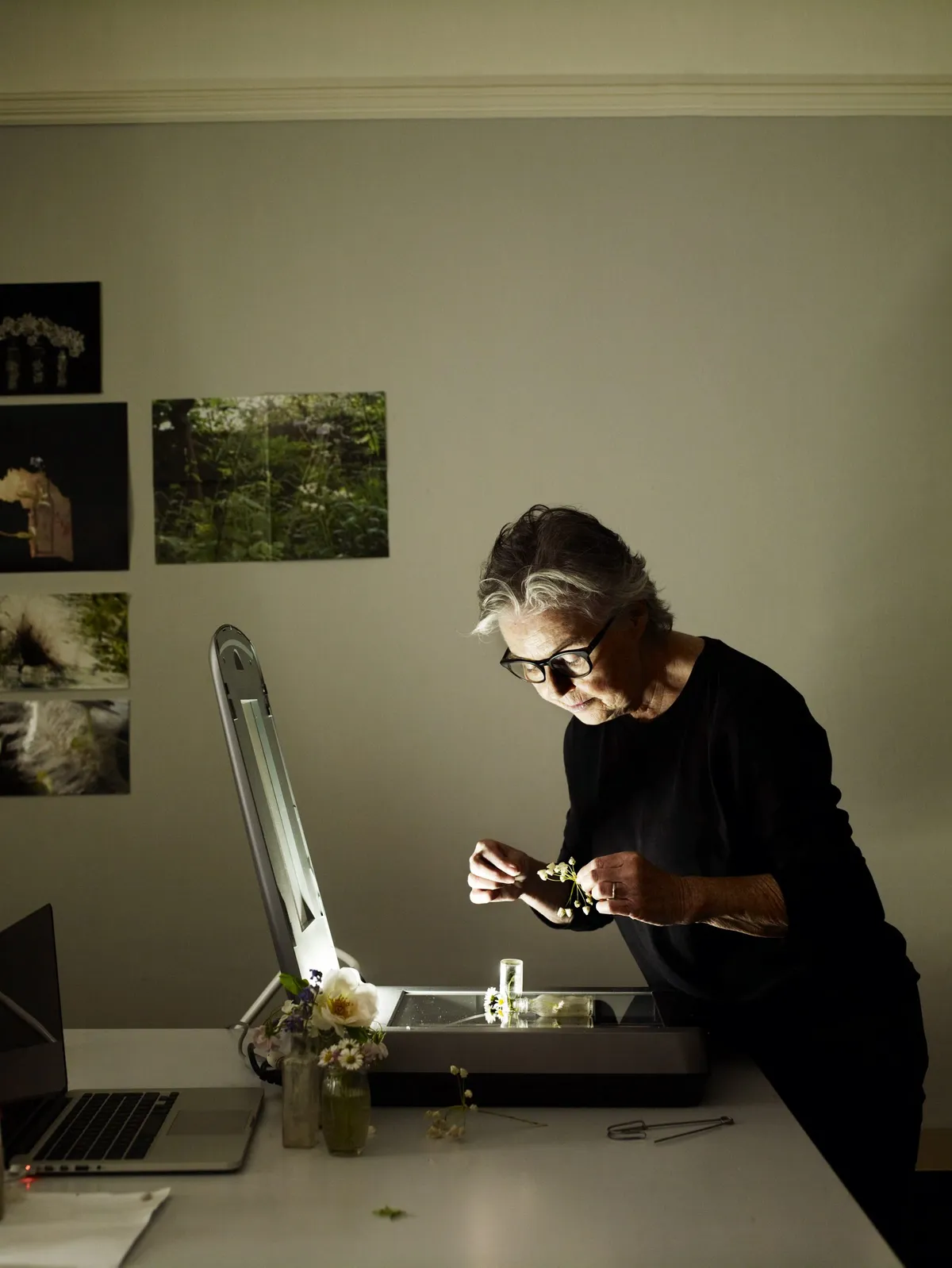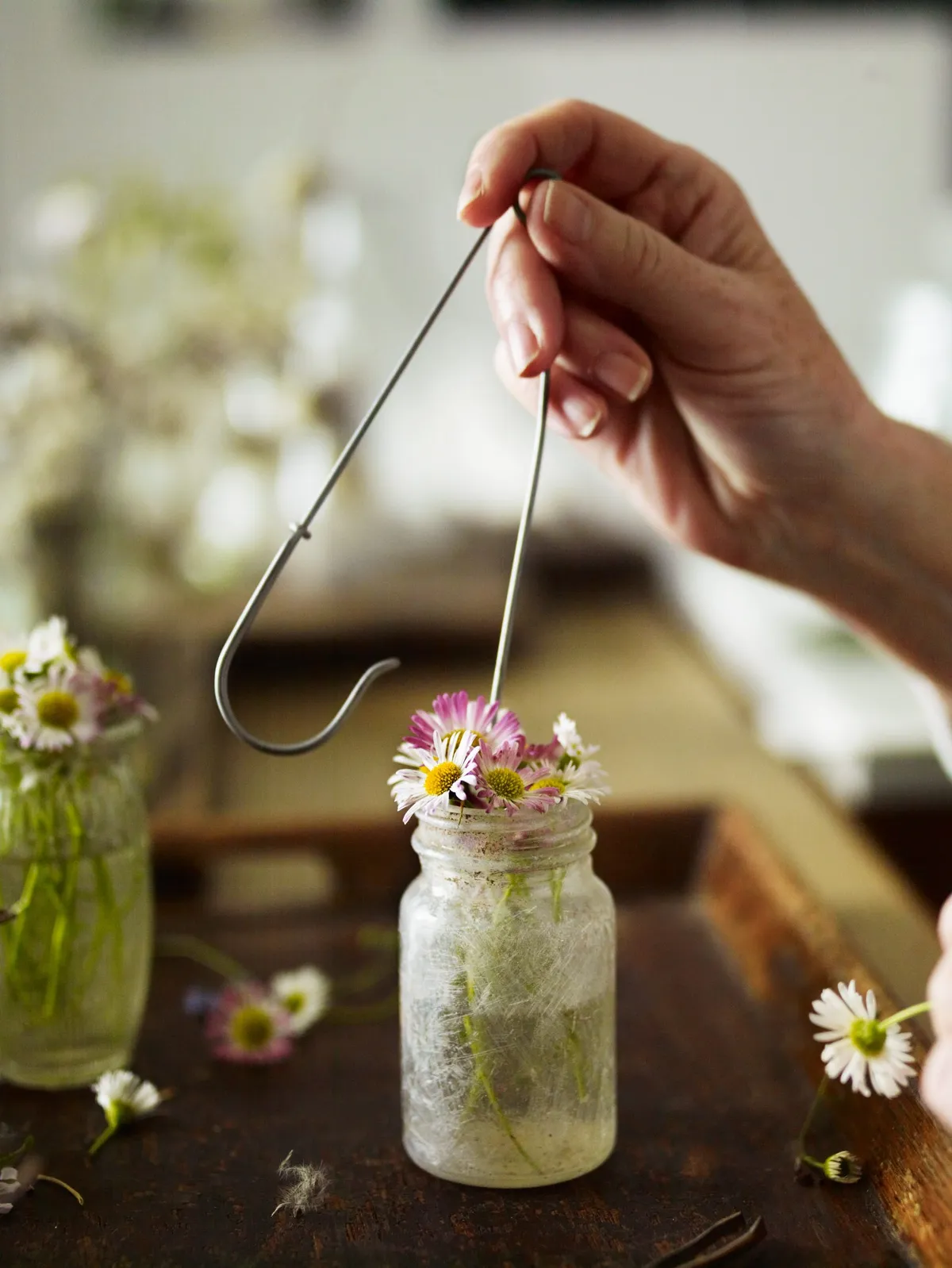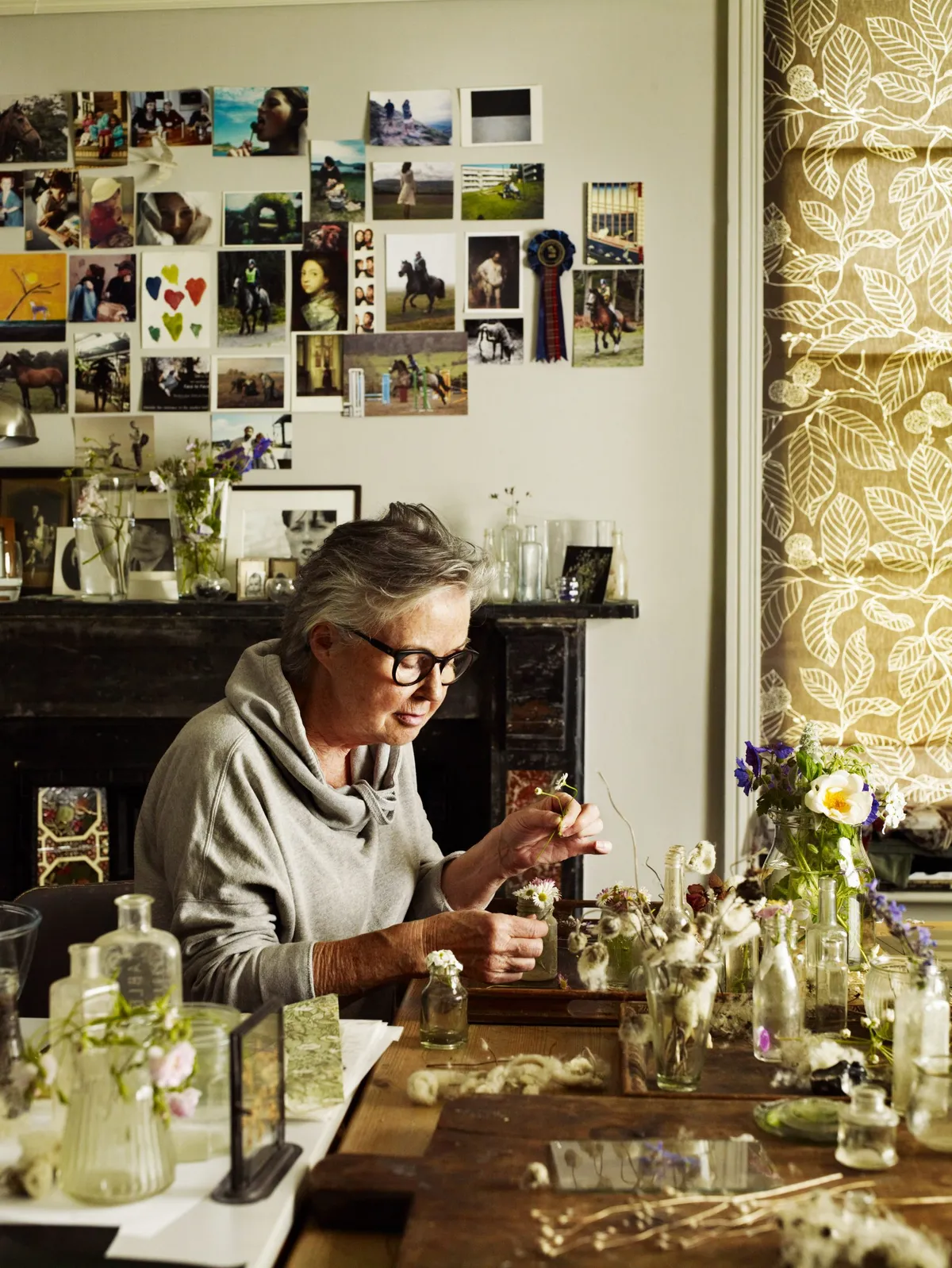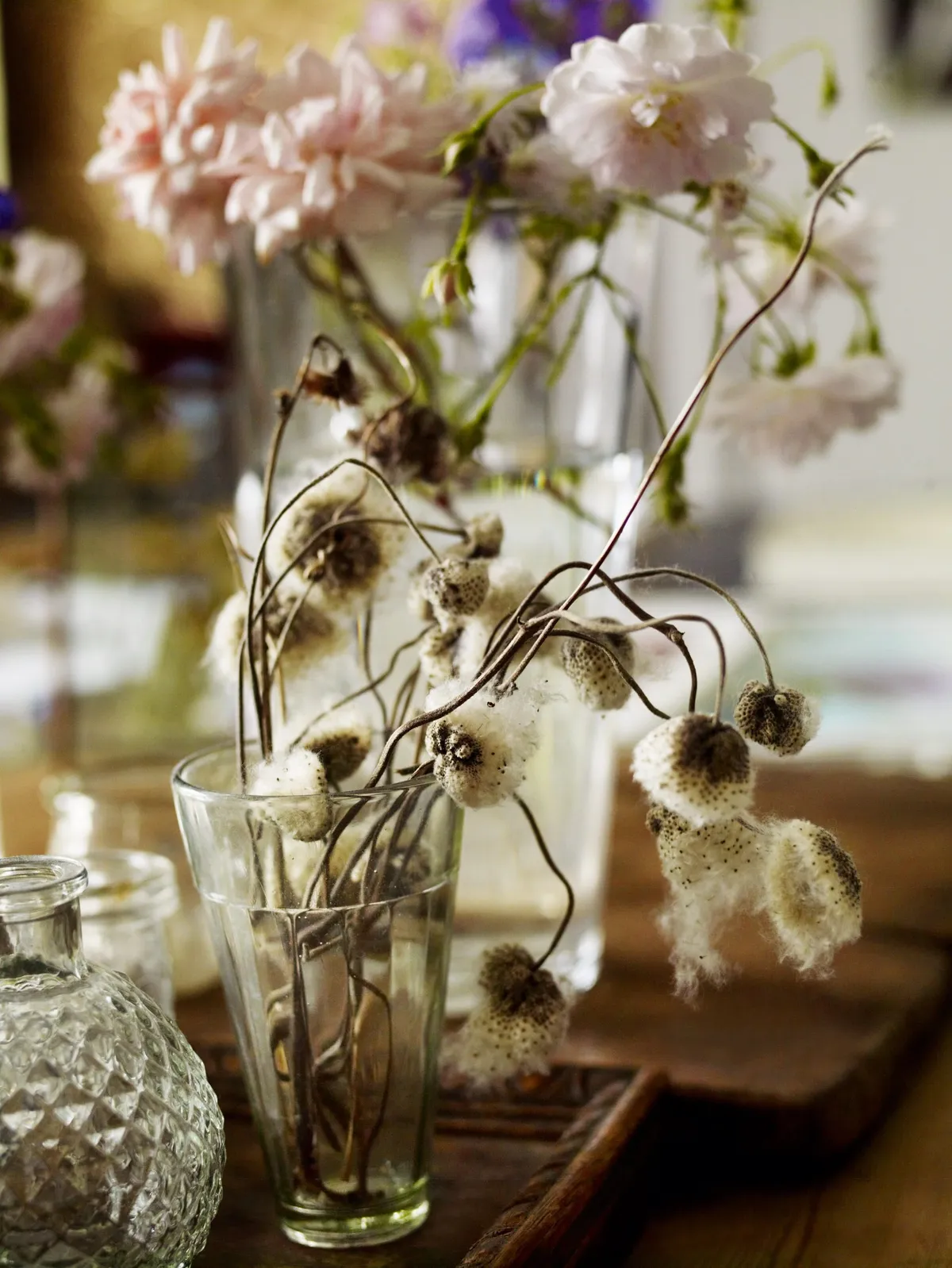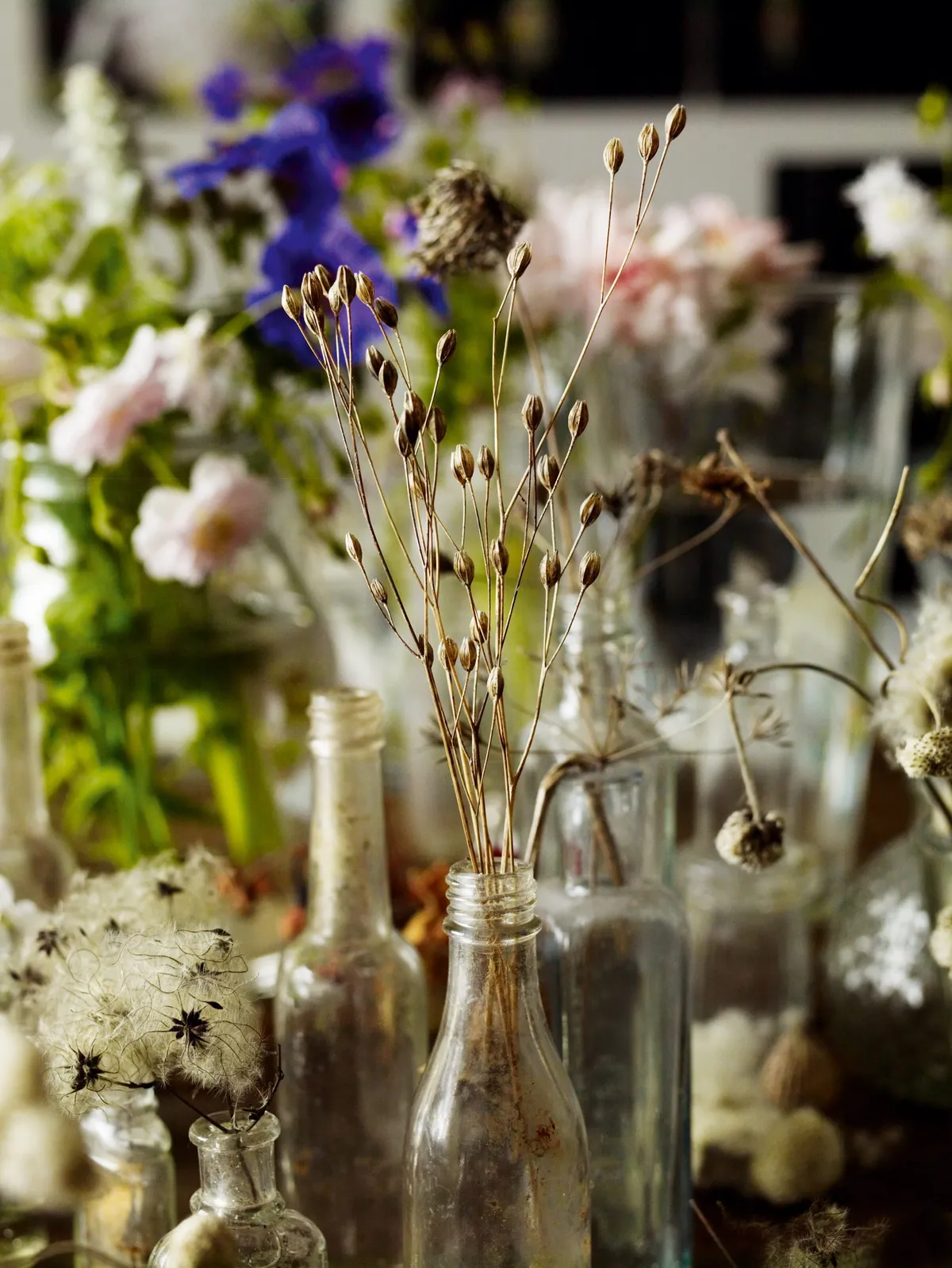I first met Toril Brancher in a chance encounter along a lane in the foothills of the Sugar Loaf in the Black Mountains near Abergavenny. I was pushing my son in his buggy alongside banks covered in cow parsley, stitchwort and bluebells. Toril was walking in the opposite direction with a few sprigs from the hedgerow in her hand. She looked slightly sheepish as if caught in the act of pillaging the abundant flora. Our conversation then was about babies, but has since been about flowers and photography. At the time I didn’t know that Toril was a photographer and that the cow parsley she was holding was destined for her studio.
Toril works with an ancient and battle-worn A4 flatbed scanner and sheets of glass (scratched through the reiteration of making) that act as barely seen frames for her subjects – flowers, seedheads and old glass bottles. It is a process akin to contact printing whereby objects are arranged on photography paper before being exposed to a source of light. Toril describes how the plants “cling on for dear life” as she composes them. Anyone who gathers wild-looking blooms from their garden can relate to this inevitable entanglement of stem, limb and delicate petal that resists a controlled rearrangement. There’s always the feeling of other forces being in control, of the plant knowing which way it wants to twist.
Often water droplets contain rainbows or, when viewed up close, the semblance of a horizon
Once the blackout blinds are drawn to create the necessary degree of darkness, the alchemy of the process takes place as the light moves across the subject capturing hidden details: specks of yellow celandine pollen, mould trapped within glass vessels, wavy strands of sheep’s wool ensnared in white thistles, all recorded in high resolution against a near-black backdrop. Water is another element of the composition. Undulating patterns of moisture reveal surface tension between glass, soft petal and scanner.
Often the droplets contain rainbows or, when viewed up close, the semblance of a horizon. It is a carefully honed process, requiring intuition and trust. Chance is embraced: “The bugs crawl across the glass as the pictures are made.” And it is in these serendipitous details – tiny critters among spot-lit blooms or tattered petals among fresh unfurlings – that her prints osmose unusual beauty.
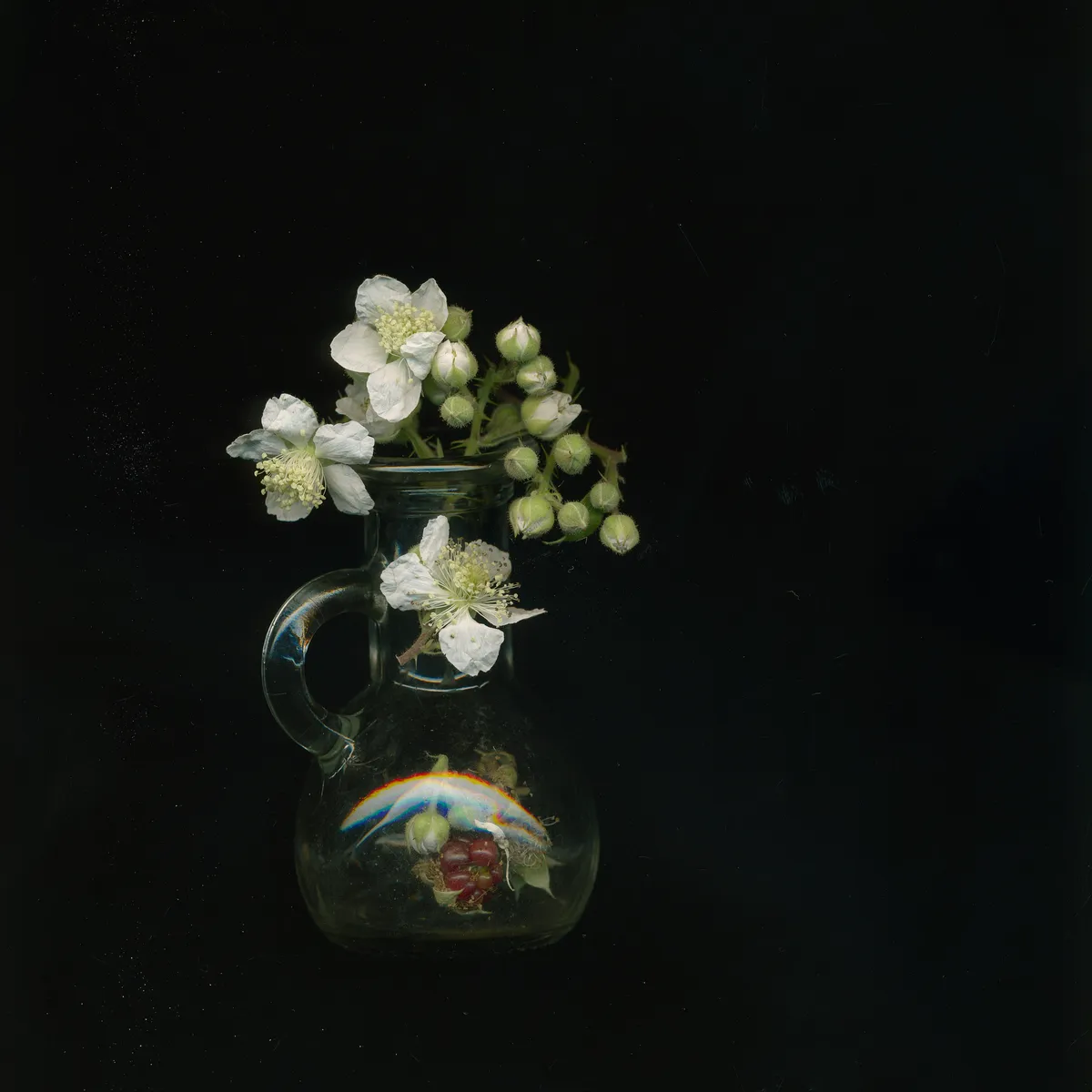
Originally from Oslo in Norway, Toril lived in Bristol and Japan before settling in Abergavenny 30 years ago. As a child she loved creating herbariums and it is easy to imagine the journey from these collections of pressed plants arranged on paper to her present-day work. But it hasn’t always been just flowers. She studied documentary photography at the University of Wales, Newport, and much of her early work focused on outreach projects with local arts organisations, such as working with teenagers in the industrial town of Blaenavon. After hearing how one of her lecturers scanned bare soil, Toril had the idea of scanning plants. Ever since, she has gardened with a mind for growing specimens for her work, constantly recomposing her romantic plantings as if searching for an elusive spark of inspiration. Portraits of the same species from the same colony reappear years apart in subtlety altered guises.
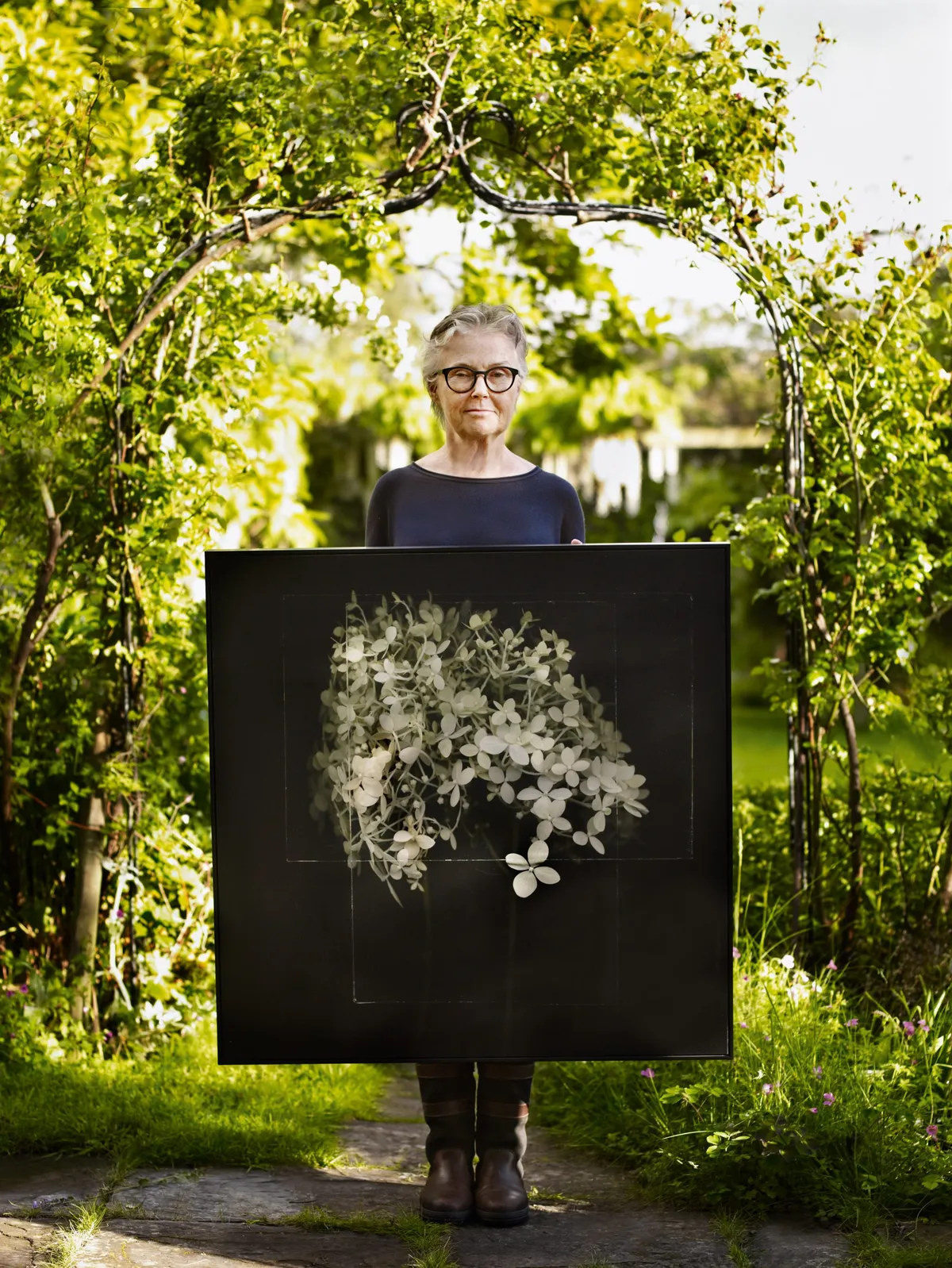
Every winter she gets excited about the first snowdrops emerging and rushes out to pick them for scanning. But it doesn’t always work: “If the images don’t get me in the gut while I’m making them, I can’t expect them to move anyone else.” She picks out images of lily of the valley, cut from a colony originally given to her by a friend who died in her forties. “The plants live on,” she says. “In my garden the clump has established and it helps keep the memory of the gardener alive.” Perhaps this constant illusion to decay, to death and in turn to life is what makes her art so alluring.

For me, there is a sense of the Gothic about her images – a single, fragile poppy stem floats within the dark, square space of the image’s frame. Like the monochrome clothes that she wears, colour is kept minimal and when included – in the luxurious purple of a tulip, for example – it is deliberate. Often blown up large, sometimes tenfold in scale, Toril’s art reminds me of what it is like to look at the
world in minuscule detail, as a young child might. Far removed from our brisk, digital capture of the world, her images feel closer to the paintings of the Dutch floral masters, whose naturalistic studies of blooms, their decay and fauna remind us nearly 300 years later of our own fragility and of how beauty, and life, are fleeting and transient, yet utterly absorbing.
Useful information Toril is represented by Gallery at Home, galleryathome.co.uk. Find out more about her work at torilbrancher.com
